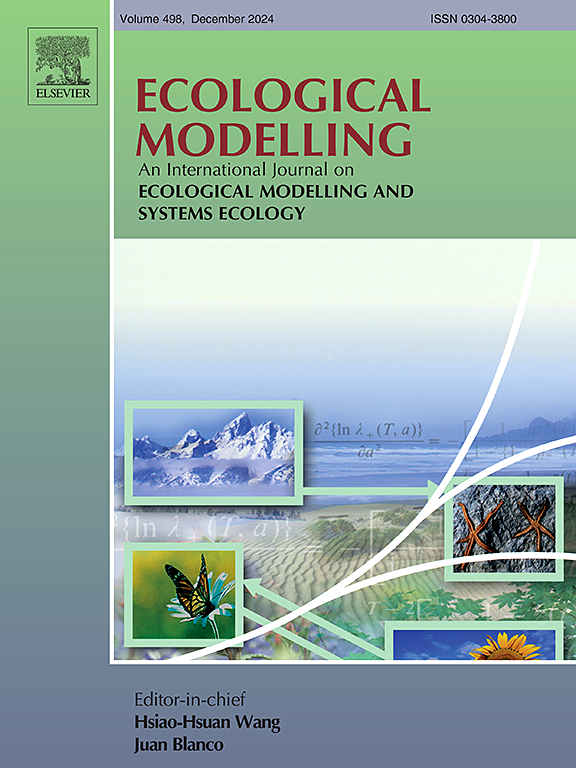Structural differences across hydrological models affect certainty of predictions of nature-based solution benefits
IF 2.6
3区 环境科学与生态学
Q2 ECOLOGY
引用次数: 0
Abstract
Quantifying uncertainty in hydrological modelling has critical implications for informing decisions around land-use/land-cover trade-offs and management and therefore is good practice. Different hydrological modelling tools commonly used in water resource management are known to produce diverse results. This uncertainty is frequently overlooked in both research and applied cases. The influence of structural differences in terms of water balance partitioning in different models (model fidelity) has particularly been neglected. This study aims to quantify the uncertainty resulting from hydrological model structural differences for a specific nature-based solution scenario: clearing of invasive alien trees from mountain catchments in a water scarce region of South Africa. Clearing of these trees and restoration to indigenous shrublands has been shown to make more water available in catchments by reducing evapotranspiration. However, questions of magnitude and spatial variation remain. The extent of the increase in water availability within a given catchment, the pathways through which this change occurs, and the spatial variability of benefits across landscapes need to be better understood. We perform a model inter-comparison study of five hydrological modelling tools applied to a case study, using the same input (forcing) data and catchment conceptualisation, with equivalent parameterisation. All five tools are frequently used to guide decisions in water resource management in South Africa. The models were all calibrated against the same streamflow observations, and all were found to produce satisfactory results in this regard. The nature-based solution of clearing invasive alien trees was predicted to increase mean annual streamflow by 2.66 Mm3 on average, but with considerable uncertainty. Mean annual streamflow estimates varied by 16.1 Mm3 among models under this scenario (126.7-142.8 Mm3, 12 % of mean annual streamflow). In terms of spatial variability, modelling tools all simulated a streamflow increase (0.4-1.0 %) when invasive alien trees were cleared from the riparian zones instead of the uplands, again with uncertainty (121.4-141.1 Mm3, 15 % of mean annual streamflow). For all of the models, the main water balance component accounting for these streamflow changes was evapotranspiration. However, the pathway for this reduced evapotranspiration differed among models. For some models, canopy interception was the primary driver of the decreased evapotranspiration with invasive alien tree clearing, while for others it was soil and groundwater controls. This raises the age-old concern around equifinality in hydrological modelling in data scarce catchments, i.e. getting the right result for different reasons, and highlights the need for additional hydrological process data for resolution. We recommend the best practice of trying to estimate the uncertainty arising from structural differences in commonly used/accepted local models through the application of multiple models to case studies. This is especially important where the implications of decisions could hold significant consequences to people and nature.

求助全文
约1分钟内获得全文
求助全文
来源期刊

Ecological Modelling
环境科学-生态学
CiteScore
5.60
自引率
6.50%
发文量
259
审稿时长
69 days
期刊介绍:
The journal is concerned with the use of mathematical models and systems analysis for the description of ecological processes and for the sustainable management of resources. Human activity and well-being are dependent on and integrated with the functioning of ecosystems and the services they provide. We aim to understand these basic ecosystem functions using mathematical and conceptual modelling, systems analysis, thermodynamics, computer simulations, and ecological theory. This leads to a preference for process-based models embedded in theory with explicit causative agents as opposed to strictly statistical or correlative descriptions. These modelling methods can be applied to a wide spectrum of issues ranging from basic ecology to human ecology to socio-ecological systems. The journal welcomes research articles, short communications, review articles, letters to the editor, book reviews, and other communications. The journal also supports the activities of the [International Society of Ecological Modelling (ISEM)](http://www.isemna.org/).
 求助内容:
求助内容: 应助结果提醒方式:
应助结果提醒方式:


